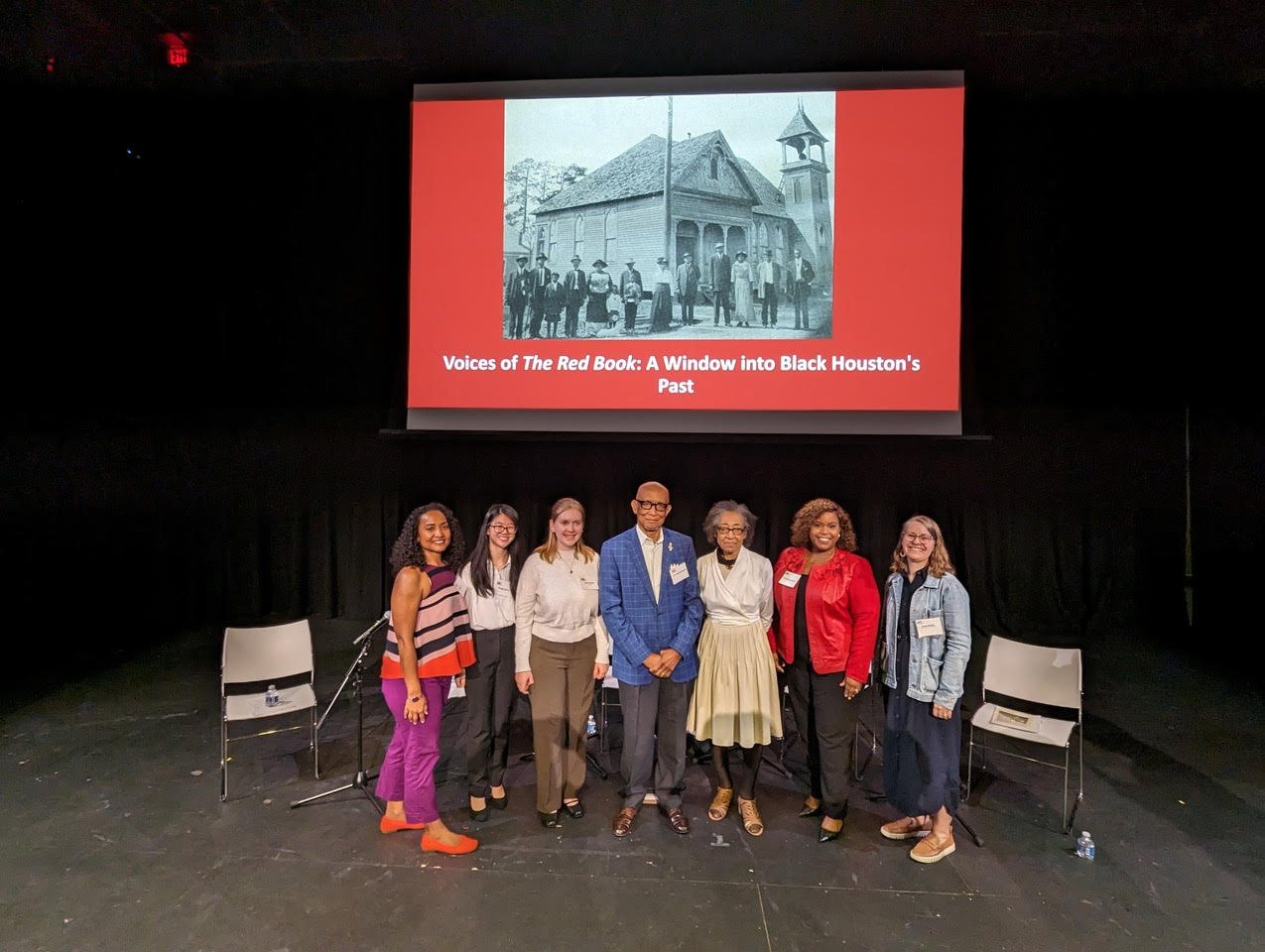In the digital archives of Rice University’s Woodson Research Center at the Fondren Library lies a unique treasure: “The Red Book,” freely available to view by the public thanks to the African American History Research Center at the Gregory School, which loaned Woodson its copy to scan and preserve. Published in 1915, just 50 years after the Emancipation Proclamation was formally announced in Texas, this one-of-a-kind compendium offers a detailed snapshot of Black middle- and upper-class life in Houston.
“It was created by members of the Black community in Houston,” said Norie Guthrie, archivist and special collections librarian at Woodson. “It highlights the businesses, churches, schools and important people in the community.”
More than 110 years after “The Red Book” was published, Fondren Fellows Georgia Jensen and Allison Bullock are using it to bridge the past to the present.
“When you’re learning about history, it can seem very detached,” said Jensen, a sophomore double-majoring in history and sociology. “When you start looking at the real people behind all the history, you start realizing just how interesting and complex history really is beyond just names and dates.”
Jensen and Bullock’s ambitious project involves meticulously extracting names and addresses from the book and using them to create a digital geospatial map containing more than 900 entries and extended biographies. This freely available resource allows researchers to delve deeper into the lives documented in “The Red Book” using advanced GIS software.
“We’re able to genealogically trace people’s families,” said Bullock, a sophomore history major. “Ultimately that culminated in our panel, where we were able to talk to descendants of the people who are in this book and talk about their experiences and their families.”
The panel, titled “Voices of The Red Book: A Window into Black Houston’s Past,” featured descendants of people mentioned in the book, including Beverly Mims-Woods, Clayton Catchings and alumna Patra Brannon-Isaac, who earned an MBA from Rice’s Jones Business School.
“My grandfather was one of the movers and shakers of Houston back in the early 1900s,” Catchings said, adding that he found a copy of “The Red Book” in a steamer trunk his grandfather had passed down and used it as a springboard for genealogical research.
“My great-grandfather was the official photographer for ‘The Red Book,’” Brannon-Isaac said. “I’m happy to be here on this journey to learn more about him.”
In addition to amplifying the voices of Black Houstonians of the past and present, the project is an example of the vital role Rice research plays in preserving and exploring Houston’s unique history.
“Students at Rice can sometimes be trapped inside the hedges, and this is a way for primarily history students to get a view of what has happened in the past in Houston and how that connects to today,” Guthrie said.

